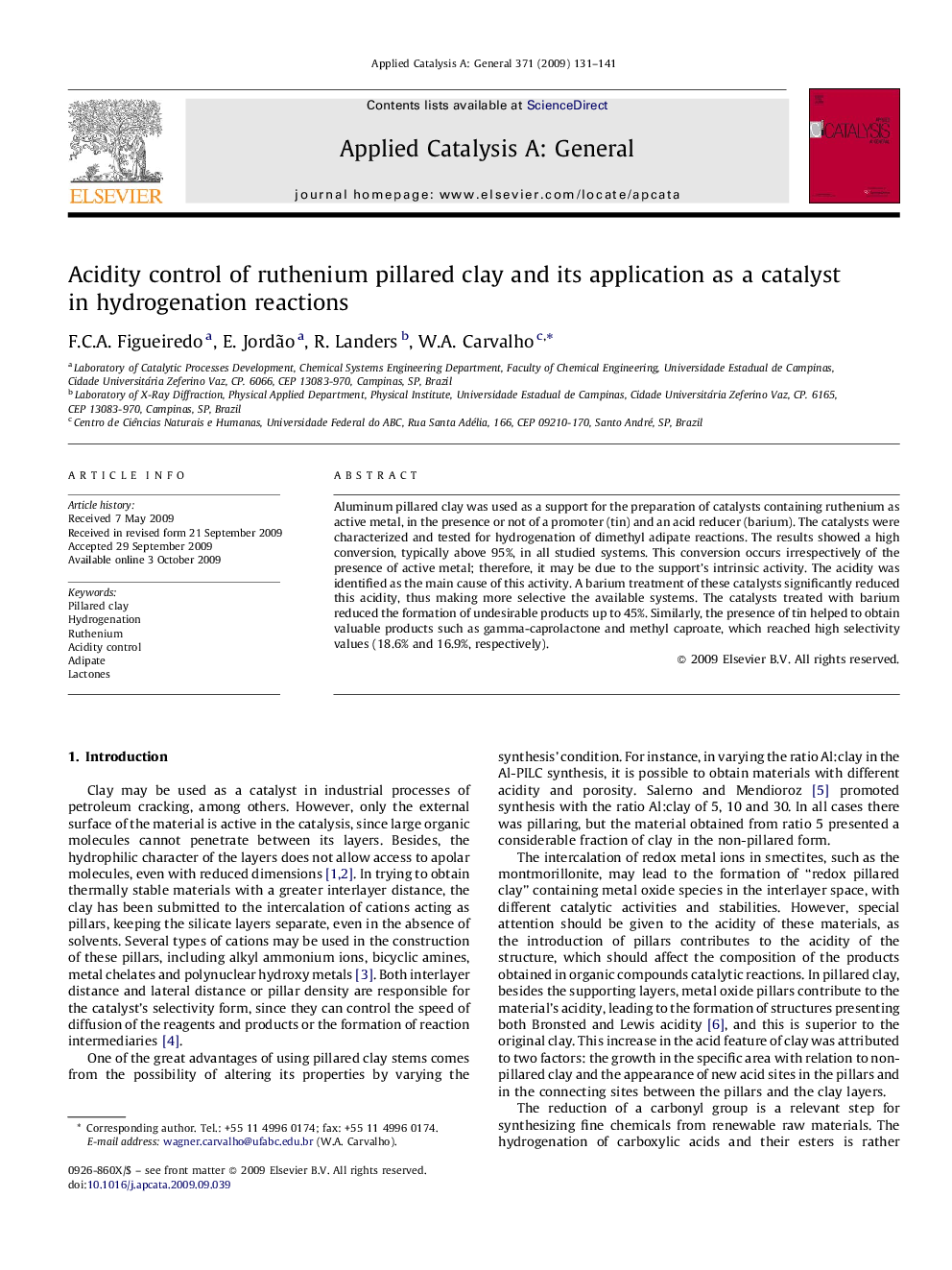| Article ID | Journal | Published Year | Pages | File Type |
|---|---|---|---|---|
| 42395 | Applied Catalysis A: General | 2009 | 11 Pages |
Aluminum pillared clay was used as a support for the preparation of catalysts containing ruthenium as active metal, in the presence or not of a promoter (tin) and an acid reducer (barium). The catalysts were characterized and tested for hydrogenation of dimethyl adipate reactions. The results showed a high conversion, typically above 95%, in all studied systems. This conversion occurs irrespectively of the presence of active metal; therefore, it may be due to the support's intrinsic activity. The acidity was identified as the main cause of this activity. A barium treatment of these catalysts significantly reduced this acidity, thus making more selective the available systems. The catalysts treated with barium reduced the formation of undesirable products up to 45%. Similarly, the presence of tin helped to obtain valuable products such as gamma-caprolactone and methyl caproate, which reached high selectivity values (18.6% and 16.9%, respectively).
Graphical abstractAluminum pillared clay was used as a support for the preparation of catalysts containing ruthenium as active metal. The catalysts were characterized and tested for hydrogenation of dimethyl adipate reactions. The results showed a high conversion, typically above 95%. A barium treatment significantly reduced the Bronsted acidity of these catalysts, thus making more selective systems available.Figure optionsDownload full-size imageDownload as PowerPoint slide
